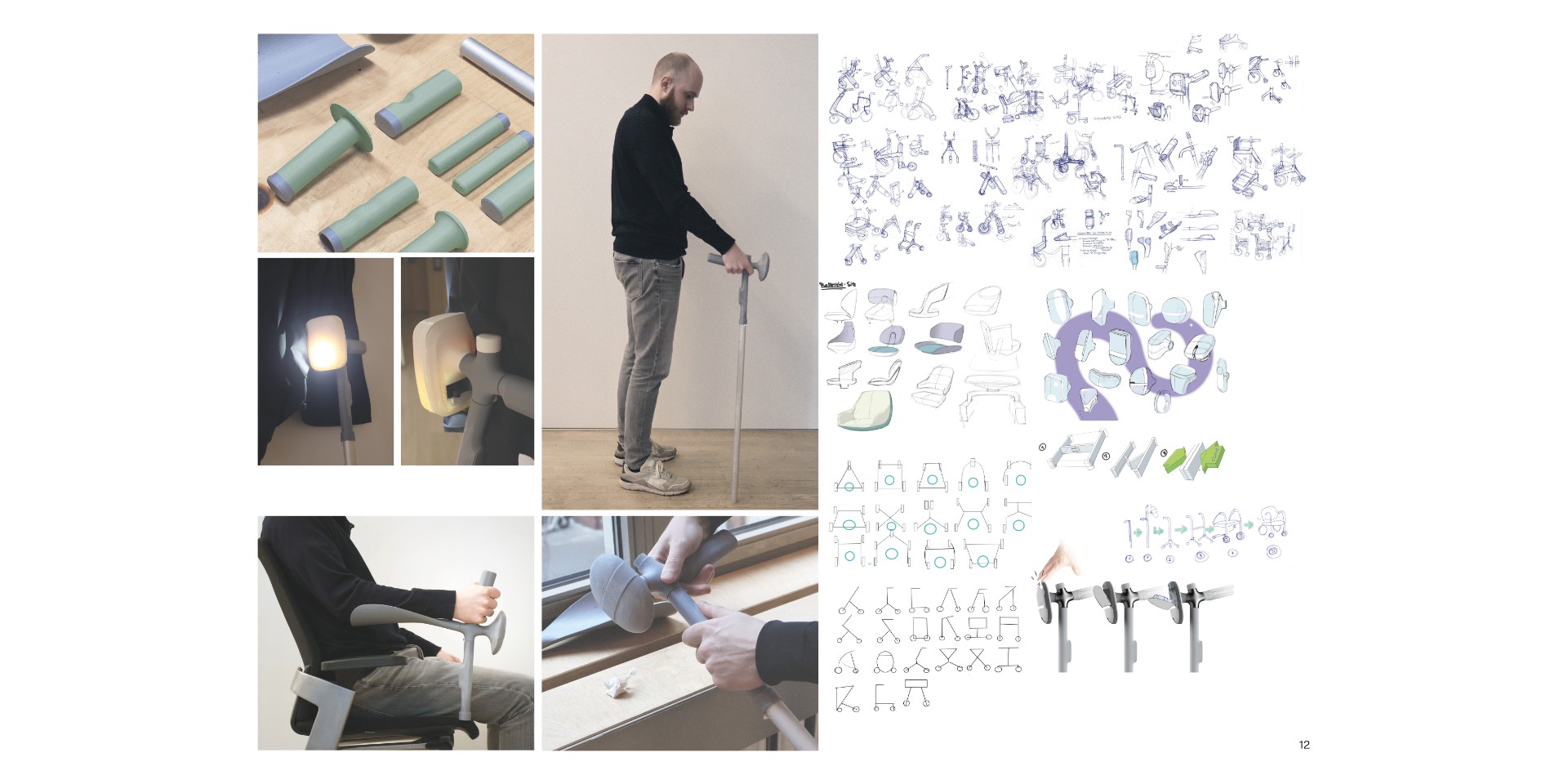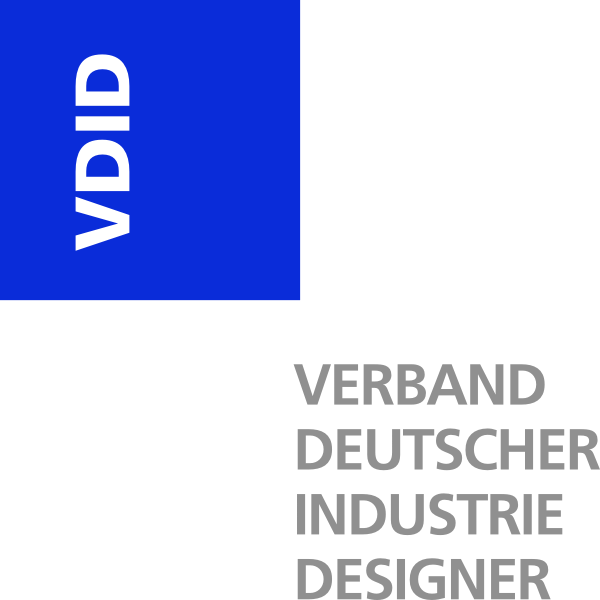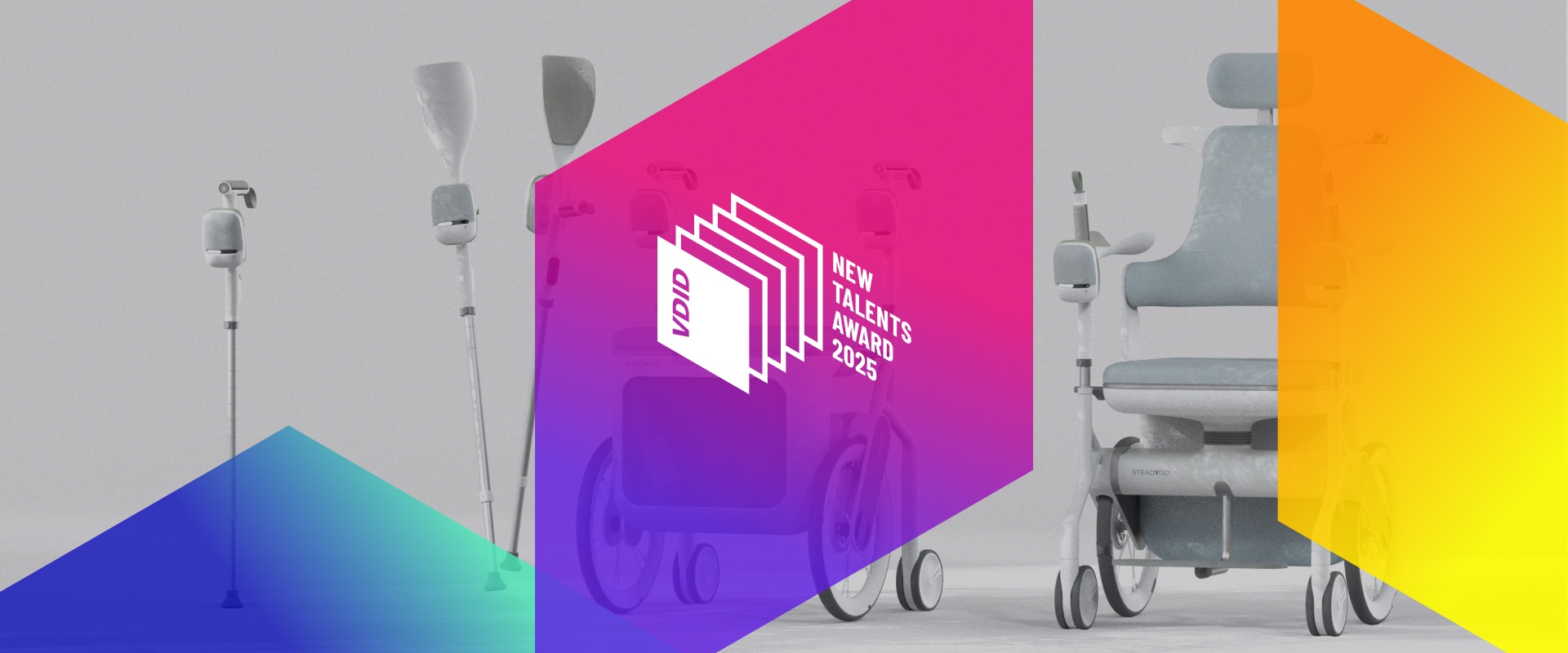SteadyGo
SteadyGo is a modular mobility aid concept that focusses on the progressive stages of Parkinson‘s Disease (PD). It consists of four different mobility aids, each serving the needs and requirements of the PD-affected individual at a certain stage of the sickness. Starting with a small set of modules, that results in a walking stick after being assembled, the set can be supplemented by additional modules, making it possible to transform the walking stick into a crutch, a crutch into a walker and a walker into a wheelchair. All modules or components are specifically designed for people with PD, meaning that they are ergonomically formed and easy to handle. SteadyGo not only aims to make walking aids more suitable for individuals with PD, but also manages to simplify processes and improves the whole user experience for the affected people and their relatives. With a focus on seamless adjustability and rapid reconfiguration, the proposed system is intended to promote independence and dignity, strengthening the user’s sense of control and continuity. Furthermore, the modular strategy offers ecological and economic benefits by allowing for resource-efficient production, maintenance, and personalization. The ultimate goal is to create a supportive product experience that empowers individuals and simplifies caregiving routines.
Prozess
At the start of my project I was following my grandma, who was taking care of my PD affected grandpa, closely during the course of the day to see and identify daily challenges and obstacles. Looking at the used devices and the involved paper work, I realized that processes should be simplified and specified for PD. Starting from this experiences I was starting to sketch ideas and different designs to find the right shape for a modular and flexible component system. During the process of creating the concept and the modular elements such as a medical kit or light, I placed strong emphasis on iterative prototyping. Using 3D printing, I created a series of small-scale and full-size models to simulate different products and real-life usage scenarios. These included also a walking stick, crutch, handrail, and forearmrest. The aim was to test the interplay of modular parts, refine ergonomics, and avoid functional design flaws early in the process. For instance, I printed over ten handle variations to determine the most comfortable and stable grip. I also explored the integration of a lighting feature into the P-Kit, testing beam intensity, angle, and visibility in low-light conditions using realistic prototypes. The flashlight was designed to provide a wide field of illumination—especially important for navigating dimly lit environments. These tests highlighted the importance of balancing functionality, aesthetics, and modularity in the product system.
Motivation
When my grandfather was first diagnosed with Parkinson‘s Disease relatively late for his age in 2017, it came as a complete surprise to the family. Since we weren‘t well informed about the causes and impacts about this disease in the beginning, we didnt know about all the struggles, wheather mentally, physically or financially, that are going to come near us. Apart from the mental challenges caused by the feeling of losing a person as the one who he or she once was, my grandmother struggled to keep up with the constant new requirements that allowed my grandfather to be taken care of at home. Practically that meant negotiating with the medical insurance about which new mobility aids and other assistive devices are going to be financially supported and not, which adaptions are absolutely necessary and which are not. As a result my grandparent were accumalating a wide range of different mobility aids such as a simple walking stick in the beginning to more complex aids like a walker or a wheelchair and PD-friendly bed in the end of all stages. Constant support from the rest of the family was indispensable. Now my grandfather is in the last stage of Parkinson‘s disease. When I look back at the journey from the first diagnosis to now, I realize that as much as people have heard of PD today, there is still much room of improvement to let people with PD age with dignity and help them on their way living with it.

Hochschule Magdeburg-Stendal
Projektbilder

Jetzt Mitglied im VDID werden!
Unabhängig vom breiten Leistungsspektrum für seine Mitglieder, bietet der VDID eine Plattform für den berufsspezifischen Austausch mit kompetenten Kolleginnen und Kollegen. Die Kontakte und die Zusammenarbeit mit Ministerien der Wirtschaft und der Kultur sowie Design-Kooperationen auf regionaler und überregionaler Ebene sind wichtige Stützen des Verbandes.
Nahezu 400 IndustriedesignerInnen haben sich für eine Mitgliedschaft im VDID entschlossen. Und das hat gute Gründe. Werde auch Du Teil unseres Netzwerks!
Mitglied werden





